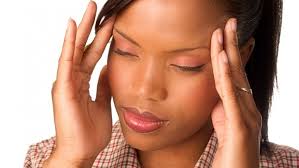
Ways to Monitor Migraine Auras
Flashing lights, wavy lines, tingling — for many people who have migraine headaches, these and other sensations, known as an aura, signal that a migraine is about to occur. But while auras can be unnerving, seeing them is like hearing a fire alarm; it’s telling you to take medication right away and possibly stop migraines before it begins.
About 30 percent of migraineurs (people with migraines) have what doctors call “migraine with aura.” They will experience a visual or other sensory disturbance anywhere from 5 to 60 minutes before the headache pain begins.
Table of Contents
Aura: What You Might See
The aura that precedes a migraine can take different forms.
- Wavy or jagged lines in a zig-zag pattern.
- Flashing lights and colors.
- Blind spots or partial loss of vision.
- Distortions of the size, shape, and location of fixed objects.
- Your face might feel numb.
- Your speech could get slurred.
- You might feel like you’re about to fall.
- You feel like pins and needles are moving slowly down your arm.
Other physical changes you might experience:
Migraine Aura: Is it Dangerous?
Some researchers don’t think so. Scientists who have looked at brain images of people experiencing an aura think aura is an electrical phenomenon involving nerves in the brain. Whether one person with migraine has auras and another doesn’t will depend on which patient has the more sensitive nerve cells.
When particularly sensitive nerve cells are repeatedly stimulated by flashing lights, for example, that stimulation builds up over time. So when the nerve cells suddenly begin firing off, they trigger activity that leads to those visual and other disturbances.
In that way, an aura helps warn you that a migraine is coming. Talk to your doctor about using this warning sign to take migraine medication right away.
Migraine Aura and Risk of Stroke
Migraine aura signs are similar to symptoms that people who have had a transient ischemic attack, or a mini-stroke, feel. A TIA occurs when your blood vessels are temporarily blocked, usually causing no lasting damage.
“This is very disturbing, and many people think they are having a stroke,” says Seymour Diamond, executive chairman of the National Headache Foundation, and director of the Diamond Headache Clinic and the inpatient headache unit at Saint Joseph Hospital in Chicago. The way you tell the difference, Dr. Diamond says, is that with an aura, the feeling will travel down the arm. If the person is having a stroke, the sensation would affect the whole arm, at once.
Research suggests that there may, in fact, be a connection between migraine aura and stroke, especially in women over age 45. And the link between stroke and migraines with visual auras is even stronger in women who smoked and used oral contraceptives.
What’s the connection between stroke and aura? One theory suggests that the aura slows blood flow and increases blood-clotting factors, leading to the potential for blocked blood vessels. While stroke during the actual aura is extremely rare, the blood vessels that become inflamed during the aura can remain that way for some time after the aura passes, creating a greater risk for arterial damage and hardening.
People with visual auras who suffer mild, infrequent attacks are at minimal risk, while those who have suffered severe, lengthy attacks for several years, smoke, or use oral contraceptives are at greatest risk. However, the number of people with visual aura who suffer stroke is still relatively low, and more research is needed before a more definite answer is found about the connection between strokes and auras.
Monitoring Migraine Auras
Some doctors will closely monitor their patients with visual aura who have a long history of severe, lengthy attacks, because of their risk of stroke. K. Michael Welch, MD, president of the Rosalind Franklin University of Medicine and Science in Chicago, says he will prescribe a daily baby aspirin for a patient with severe visual migraine aura — not to ward off migraines, but to reduce the stroke risk.
If you have migraines with aura, don’t be surprised if the aura comes and goes; don’t even be surprised if they appear and a headache doesn’t follow.
What you should pay attention to: An older person who’s never had a migraine and who starts having migraine aura-like symptoms. Make sure that person sees his or her doctor to rule out problems such as TIA and other brain conditions.






